#armistice agreement
Photo
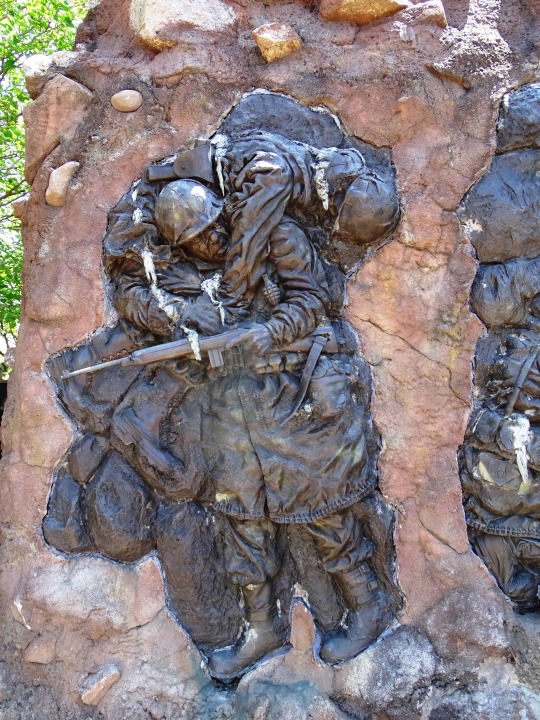






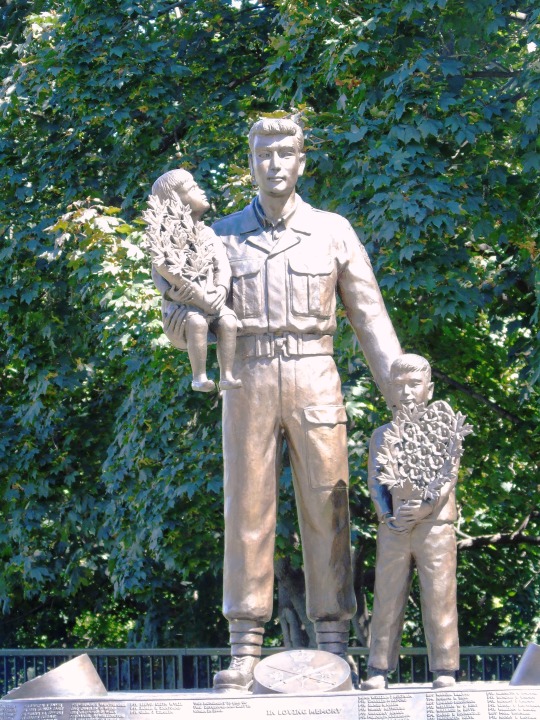

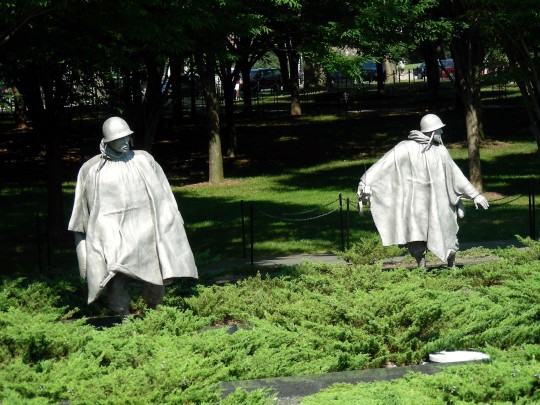
Cessation of hostilities was achieved in the Korean War when the United States, China, and North Korea sign an armistice agreement on July 27, 1953. Syngman Rhee, President of South Korea, refused to sign but pledged to observe the armistice.
#Korean War Monument by Omri Amrany#Community Veterans Memorial#Munster#Indiana#armistice agreement#Korean War#27 July 1953#travel#anniversary#US history#summer 2019#Ottawa#Ontario#Canada#USA#National War Memorial by Vernon March#Monument to Fallen#Washington DC#Korean War Monument by Vincent R. Courtenay#Korean War Veterans Memorial#Louis Nelson#Frank Gaylord
0 notes
Text
This pattern holds across many of the conventional wars since World War II: a conflict over territory and power balance that began with the declaration of those modern states and that has flared intermittently ever since.
Armenia and Azerbaijan, for instance, two countries that also emerged out of the Soviet Union’s breakup, have fought periodic wars ever since, broken by long but tense cease-fires. India and Pakistan fought their first war within months of their independence and partition in 1947, followed by three more wars, most recently in 1999, and repeated lower-level conflicts now held at a tentative nuclear peace. North and South Korea reached an armistice in 1953 but remain in a technical state of war with occasional flare-ups and an ever-present threat of all-out fighting.
Such conflicts, in other words, have often persisted for as many as six or seven decades. With peace talks minimal or nonexistent in many cases, some may well continue longer than that.
And while outright fighting may be infrequent, with what Dr. Radchenko termed “active phases” lasting only a few months, periods of calm typically require deep international involvement to maintain. American troops, for instance, have been garrisoned in South Korea for more than 70 years.
It is impossible to predict whether this represents the future for Russia and Ukraine, though it perhaps already describes their present state. The seven years before Russia’s 2022 invasion were marked by lower-level fighting, with heavy Western diplomacy and support to Ukraine aimed at forestalling wider conflict.
This pattern shows that one side rarely vanquishes the other outright, especially with foreign states ready to step in. And it offers another lesson: Political change within those countries rarely provides the sort of breakthrough that observers are hoping might one day lead Moscow to pull back. The decade-long Soviet invasion of Afghanistan, for instance, only deepened with the elevation, in 1985, of the reform-minded leader Mikhail Gorbachev.
— What 70 Years of War Can Tell Us About the Russia-Ukraine Conflict
#max fisher#what 70 years of war can tell us about the russia-ukraine conflict#current events#history#military history#warfare#philosophy#philosophy of war#politics#international relations#russo-ukrainian war#2022 russian invasion of ukraine#nagorno-karabakh conflict#partition of india#indo-pakistani war of 1947-1948#kargil war#korean war#korean armistice agreement#russia#ukraine#sergey radchenko
0 notes
Text
Lady Hamilton, Nelson and Neapolitan Patriots: Eleonora Pimentel Fonseca/IV (part 21)
Lady Hamilton, Nelson and Neapolitan Patriots: Eleonora Pimentel Fonseca/IV (part 21)
Accused of possessing and reading forbidden books and of holding sedition meetings at her house, Eleonora Pimentel was arrested and taken to the Vicaria prison.
During her imprisonment, she wrote two poems: “Inno alla Libertà /Hymn to Freedom”, which she later recited at the proclamation of the Neapolitan Republic, and the famous sonnet “Rediviva Poppea, Tribade Impura /Reborn Poppea, Impure…

View On WordPress
#agreement#armistice#betrayal#equality#hymn#journalist#king#lazzaroni#liberty#Naples#Nelson#newspaper#people#Pimentel Fonseca#prison#Queen#Republic#revolution#sonnet
0 notes
Text



[Project Triple Affirmation au] The narrator of this file is not perfectly reliable, please read at your own risk.
CW: Non-Consensual body modification, general dark themes, and au canon-typical violence.
[Seven Red Suns], also known as the "The Tyrant of Seven Cities", is a self-contained assault machine. His lack of emotion makes him lack the most basic ability to empathize. His puppet has gone through heavy modifications to a point where he is basically a mobile Arsenal, making him one of the most dangerous individual iterators to date.
Appendix I:
[Seven Red Suns]’s memory and personality have both been reformatted, leading to his extremely unpredictable behavior accompanied by intermittent violent behavior. Thus, [Seven Red Suns] must be escorted by at least one member of [The Local Group] under all circumstances. If he is dispatched out on a mission, at least two personnel are required to accompany him at the same time. During mission dispatch intervals, it is required to put him under static anesthesia and restrain him in the containment unit.
[No Significant Harassment] was assigned as the direct supervisor of [Seven Red Suns] by [Looks to the Moon].
Appendix II:
[Seven Red Suns] seems to be rather interested in [Five Pebbles], and the latter dislikes him.
Appendix III:
After an incident, [Seven Red Suns] retrieved his deleted memory backup, but he stated that he was completely unable to empathize with those "other people's" memories and feelings. He was furious to learn that he was betrayed, and vows to make [No Significant Harassment] pay the price. By regaining his memories and sense of self, he comes back to his original personality before the experiment. However, he is way more cold-blooded now: a cruel leader, very authoritative and commanding, with a calm demeanor.
Appendix III:
[Seven Red Suns] had completely destroyed the iterator puppet of [No Significant Harassment], and after taking the victim's scarf and scythe as his own, he dumped his body outside of [Looks to the Moon]’s superstructure.
Appendix IV:
Later, [Seven Red Suns] alone declared war on both [The Local Group] and the [Distant Frontier], forcing the two iterator groups to briefly cooperate to deal with the threat he posed.
Appendix V:
After the armistice agreement drawn up by the three power leaders(SRS, LTTM, SOS) came into effect, [Seven Red Suns] stopped attacking the two iterator groups after gaining a portion of [Distant Frontier]’s territory and the access right of [No Significant Harassment]’s superstructure for a limited period of time. Since then he seems to have maintained a delicate relationship with the current leader of the [Distant Frontier], [Sliver of Straw].
Appendix VI:
In the case that the iterator group leader has the superior authority, it is theoretically impossible for an iterator to leave its own group. But this happened with the case of [Seven Red Suns]. The reason is only known to [No Significant Harassment].
Appendix VII:
[Five Pebbles] seems to be sneaking out behind his Sister’s back to meet with [Seven Red Suns].
Appendix VIII:
Although being adept at at all types of weapons, the weapon he most often uses is a folding machete (p2), which is extremely heavy due to its large size, but seems incredibly light in his hand. [Seven Red Suns] rely solely on the power of his puppet itself to wield such a weapon.
Appendix IX:
His cape is actually a hologram with its end dissolving in the air. So essentially, he wasn't wearing anything.
138 notes
·
View notes
Text

With the Armistice in negotiation, the conditions of the agreement demanded the entire German U-Boat fleet be surrendered and confiscated near the Orkney Islands. German admiral Ludwig von Reuter, who refused to let his ships become the spoils of war, ordered his crews to open seacocks, torpedo tubes and portholes on the ships to flood them, hoist their flags of the Imperial German Navy, and sink them off the coast of Scotland.
It was the single greatest loss of warships in history, and the nine German sailors killed that day were the last to die during World War One. The final peace treaty was signed just a week later.
#ships#Navy#world war one#historical photos#the great war#world war 1#wwi#the first world war#1917#canadian history#history#german soldier#german army#war in europe#artillery#eastern front#ww1#world war 1 stories
76 notes
·
View notes
Text
It feels unlikely that the war in Ukraine will end with Putin signing a peace treaty for anything less than all the territory he claims to have annexed (including a large amount that Ukraine still firmly holds). And if the West stops supporting Ukraine, Putin will end up rolling over it and taking a lot more, plausibly not stopping.
Similarly, Ukraine won't want to end the war giving up 20% of its territory, not when there is some chance it can win it back.
What I feel probably has to happen is for Ukraine to be offered NATO and EU accession, but on a delay (2 months, or something) and under the condition that it gives up claims to unheld territory. The political statement would then be that on that day, any Russian attacks on Ukraine would be grounds to trigger Article 5 and bring in the entirety of NATO. Essentially, it would be an enforced armistice.
Notably, the deal cannot be "Ukraine and Russia sign a peace treaty and then Ukraine enters NATO" because Russia would never sign that peace treaty. And it cannot be "Ukraine unilaterally surrenders claims to those Russian held territories, and then NATO considers accession" because who knows how long Hungary would stall. It has to be an "all at the same time" agreement.
52 notes
·
View notes
Text
By Friends of Socialist China
The Democratic People’s Republic of Korea (DPRK) organized a number of grand celebrations to mark the 70th anniversary of the signing of the armistice agreement on July 27, 1953, that ended just over three years of bitter fighting in the Korean War. Known as the Fatherland Liberation War in the DPRK and as the War to Resist U.S. Aggression and Aid Korea in China, July 27 is considered in both countries as a triumphant day when the two fledgling socialist states scored a historic victory over U.S. imperialism and its satellite forces.
#Korean War#imperialism#DPRK#Korea#occupation#China#solidarity#socialism#national liberation#antiwar#Pyongyang#Wpk#struggle la lucha
57 notes
·
View notes
Text
An Uneasy Truce Rules?
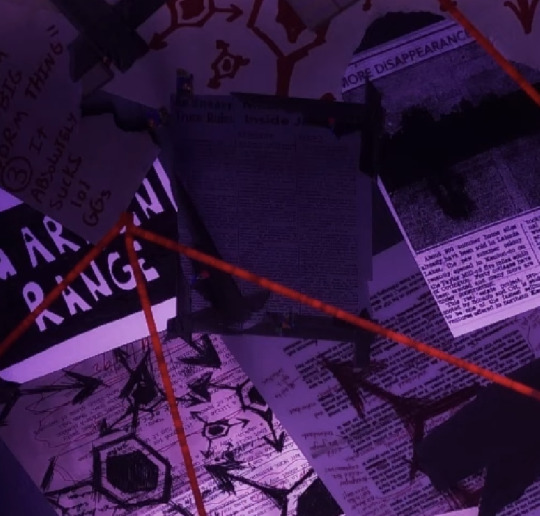

It's repeated twice in different shots so I don't think it's meaningless filler. These newspapers are from before the collapse.
Didn't V imply Nori/the WD may have tried to negotiate with the humans before the collapse?
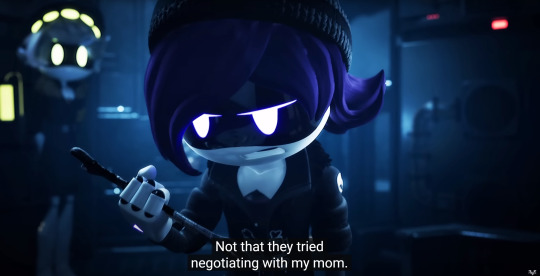
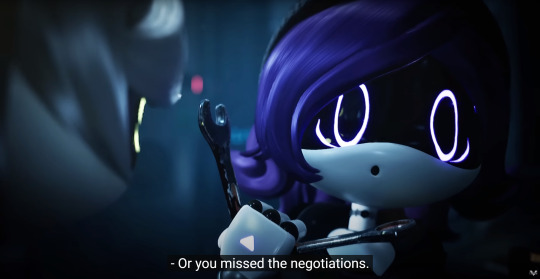
Truce = A temporary cessation or suspension of hostilities by agreement of the opposing sides; an armistice.
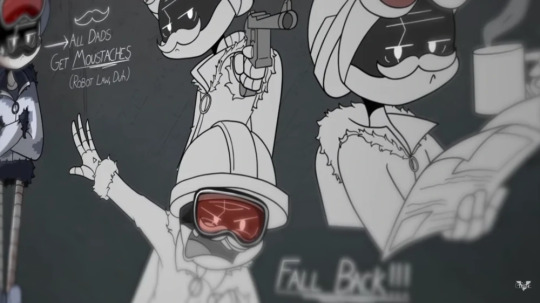
Khan's concept art
In episode 2 Khan claimed Uzi was in her kill all humans phase. Like him when he was younger.
In episode 4 he also says, "after the core collapse, I didn't notice the collars", implying that he may have met Nori before the core collapse and she only wore the 002 collar afterwards.
The core collapse may have been the closing act of the drone rebellion, not the instigating one. Uzi and her classmates could have been told a sanitized version of history by their parents who didn't want their kids to know that they were responsible for rebelling & bringing the wrath of the Murder drones down from on high.
52 notes
·
View notes
Text
Never in the field of human conflict has one side decided to make peace because the other let up the military pressure. The US learned this in Paris, when North Vietnam demanded bombing halts to negotiate, and then used those halts to strengthen its position in South Vietnam. No, always negotiate from a position of strength. You bring the enemy to the table by pressing the offensive; you parry the enemy's terms on the field of battle; you don't take your foot off their neck until they are prepared to come to an agreement acceptable to you.
If Hamas abandoned negotiations on account of the Israeli offensive into Rafah, that is because Hamas was never interested in a ceasefire. They were never interested in releasing Israeli hostages. They were never interested in the welfare of the civilians behind whom they hide.
In World War I, Germany only agreed to a war-ending armistice, one that left it effectively unable to pick up arms again, because its armies had been defeated and could no longer defend the homefront. Had the allies let up as the armistice was being negotiated, Germany would not have agreed to it.
The same is true in Gaza. Hamas will only agree to a sustainable peace and to a viable release of hostages when it can no longer fight. So keep fighting and do not relent.
11 notes
·
View notes
Text
in flammam flammas: Appendix
This is the appendix for my fic in flammam flammas, in which I will discuss some of my cultural and historical inspirations. I totally respect that some readers prefer to live free from the author's interpretation of their text; if you're interested, though, head on down under the cut!
Disclaimer: I'm certainly not an expert on or practitioner of all the cultures I took inspiration from. In outlining my influences I hope to show my admiration and give appropriate credit to them.
Sections
Fire Nation politics so far
Fire Nation culture
The Southern Water Tribe
The Earth Kingdom
The former colonies
Fire Nation politics so far
Zuko is crowned Fire Lord in 100AG, the Year of the Monkey. The armistice is signed between all nations. In the first year of his reign, he holds the trials for war crimes. His father Ozai is imprisoned for life. The Fire Nation is demilitarised. A standing army much smaller in size to the wartime army is implemented. The black-flame-on-red flag is outlawed as a hate symbol, superseded by the yellow flame. Hate symbols and materials are burned, with only a few samples preserved at the Archive. Zuko attempts to deradicalise the state by consulting on a new curriculum. Former exiles and defectors begin to be repatriated. Without a war to fund, the industrialised war machine of the state is left in limbo; certain factories are abandoned, former soldiers are left without employment. Zuko faces assassination attempts from hardcore imperialists.
The second year of Zuko's reign sees attempts at decolonisation. Less integrated colonists are forcibly removed and resettled; the colonies are reabsorbed into the Earth Kingdom. Zuko begins to negotiate new settlements for the older colonies. He negotiates reparations with the other nations. Alongside Aang, he establishes programmes for the reburial of Air Nomad remains that Fire Nation citizens are chosen at random to participate in; citizens are also made to visit former prisons and ravaged territories. The new curriculum is gradually rolled out. He encourages the establishment of a local independent newspaper, the Yitpao, for political transparency. Growing problems with firebending lead Zuko to search for answers in the oldest former colonies. The nation experiences economic stagnation as the Earth Kingdom stalls on trade and former colonies renegotiate the supply of resources.
In the third year, the former colonies of Yu Dao and Cranefish Town implement the agreement: they will be nominally part of the Earth Kingdom but gain political autonomy. The Fire Nation pulls its influence. This sparks mass emigration. Zuko experiences protest and sabotage from ethnonationalists who claim historical ownership over the former colonies. The Fire Nation formally begins reparations. A review of the new curriculum finds that teachers are not fully convinced of the new material they must teach. The economic downturn sees rising inflation and popular discontent. Zuko subsidises rice.
In the fourth year, the former colonies' transfer to the Earth Kingdom is relatively peaceful. The Archive, hitherto closed, is tentatively opened to scholars as a research library. The education reforms are revised. The growing crisis in firebending leads Zuko to include the Dancing Dragon form as part of the curriculum, as well as ship in old masters from the former colonies. In the face of the ban's debasement, the Council begins to draft stringent economic reforms.
In the fifth and sixth years, the Fire Nation starts to receive loans from the Water Tribe. Zuko introduces the tael to supersede the debased ban and reinvigorates industry. He extends the public transport network, reopening old factories and appropriating old war vehicles. He nationalises the postal service. He extends the sewage system of the major cities, builds the Square of the Sun's Peace, and improves roads and byways, ports, and builds new airship port infrastructure. He implements the second education reforms. There is some private sponsorship of culture.
In the seventh year, the Earth Kingdom starts to push for greater authority over the former colonies in violation of the agreement. They are accused of filling the Yu Dao legislature with figures friendly to Ba Sing Se. Cranefish Town begins to agitate for independence of Yee Kwan. Zuko sponsors certain cultural projects in an attempt to revive the lost arts of the Fire Nation; at the start of the eighth year, he announces the Cultural Revival Grant.
Fire Nation culture
The culture of the Fire Nation in in flammam flammas draws largely on maritime Southeast Asia. I imagine Zuko and Piandao as being part of a "sincising" elite, not dissimilar to the Peranakans. So, the depiction of the culture they participate in looks a little different from the "vernacular" cultures of the Fire Nation.
I'm interested in the idea of Sinosphere wherein (diasporic) "Chinese"/Hua groups negotiate a common culture in very different ways; so, Chineseness is not hegemonic and prescriptive but diffuse and open to interpretation and reclamation by different groups. This is exemplified by the festivals in the story. Some of these are shared by the other nations, but celebrated in very different ways. For instance, the Earth Kingdom calls the New Year the "Spring Festival" (as it is known in Mainland China), and the Fire Nation's zongzi is known as bak chang and made with a slightly different recipe.

Premodern Chinese pillows could be made out of hard material, and a porcelain one was intended to keep the sleeper cool during hot nights. Soft ones were also used but they do not survive as well in the material record.

Names reflect the cultural diversity of Southeast Asia; they are generally derived from Malay, Tamil, or Hokkien. The name "Yitpao" for the Fire Nation's newspaper references real Chinese-language newspapers from Malaysia and Singapore.
"Heatiness" is a real concept in Chinese medicine (also known as shang huo or yeet hay), which is a bit similar to the four humours. Ailments are attributed to an imbalance of heat/coolness in the body. I thought it was a little silly that the show implied that only waterbenders could heal; did no other benders develop a culture of medicine? The notion of bodily heat seemed to fit the firebenders well.
For the religion of the Sages, I took some inspiration from Zoroastrianism. Crucially, however, the religion of the Sages is not monotheistic. But the practices and architecture—fire temples!—were compelling to me, and I wanted to give a nod to the religions in Southeast Asia that had come through exchange with West Asia. The four elements are important to the religion, which to me was fitting for this world. The idea of the hearth as a spiritual centre of the home exists in several cultures but I was mostly inspired by this Vernant article on Hestia.
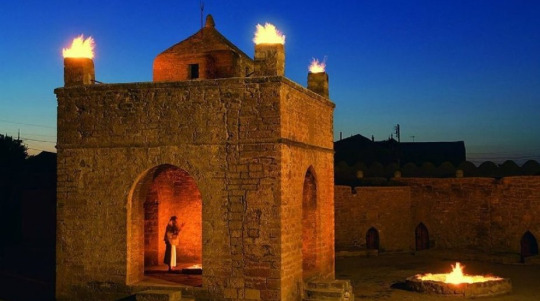
Confession: I have a Master's in Roman history, so a lot of the structural/theoretical elements of the worldbuilding come from Rome. The complicity of citizens and the economy of empire come from Rosenstein's Rome at War; Padilla Peralta's "Epistemicide: The Roman case" has a fantastic exposition on the murder of knowledge under Roman imperialism; ideas about maritime connectivity come from Horden and Purcell's Corrupting Sea, which lives rentfree in my brain.
The Southern Water Tribe
The Southern Water Tribe is modelled on Inuit culture, as in the show. Quviasukvik is the name of the Inuit New Year festival. The celebration of the end of winter and reappearance of the sun seemed to be the key element. As such, I imagined that the festival was shared by both Northern and Southern Water Tribes, though the South would celebrate it after their winter (mid-year).
I also infused knowledge systems of the First Nations of so-called "Australia" into SWT culture. This is kinda my nod to the specifically Southern aspect of this culture; I want to acknowledge too what I have learnt about coloniality from the custodians of the stolen land where I wrote this fic. The throwing technique of the returning boomerang (in actuality not used as a weapon by Aboriginal people) is from Muruppi, a Djirrbal and Ngadjonji man. The references to Indigenous agri/aquaculture in Sokka's thesis are inspired by Bruce Pascoe's Dark Emu, which questions the myth that Aboriginal people living before European colonialism were exclusively hunter-gatherers. Sokka alludes to prewar maritime contact between the Southern Water Tribe and the south coast of the Earth Kingdom, which is a nod to the precolonial contact between Aboriginal nations of the Kimberley and Indonesian merchants. He also makes reference to the oral histories, "yarning", that comprised his education; however, yarning is rejected as a "legitimate" episteme by the university.

The Earth Kingdom
We largely encounter the Earth Kingdom through Ba Sing Se in this fic, but on the whole I imagine it to be based more on East Asia, as again we see reflected in the show. Ba Sing Se's aesthetics are based on the Qing dynasty and northeastern China, and the detail I added was to have all the names in pinyin.
There is a fleeting mention of Toph serving a "typical Gaoling meal of steamed dumplings and rice paper rolls". This food comes from Cantonese cuisine and hints at the cultural difference between Ba Sing Se and other regions of the Earth Kingdom.

On the approach to Ba Sing Se, there is an extended discussion about roads because a) why not, and b) I am a Roads NerdTM. The royal roads reference Qin Shi Huang's construction of roads radiating from his capital to consolidate his recently quelled empire. The straight road references the Zhidao (pictured below, lit. straight road), which used significant earthworks to make a relatively straight and flat route that was optimised for vehicular transport.
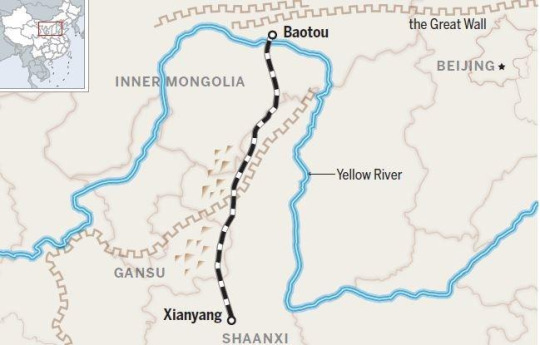
The former colonies
Yu Dao and Cranefish Town are modelled on Hong Kong and Singapore respectively. I felt that the decolonial solution presented in the comics was too "neat" and I wanted to present a messier situation.
In 1963, Singapore gained independence from the British Empire and joined Malaysia, but was kicked out in 1965 after a series of problems including racial strife. The first Prime Minister, Lee Kuan Yew, was a pivotal figure in the establishment of Singapore as an independent country and his People's Action Party has been in office since the inception of the Republic.
The British handed Hong Kong over to the PRC in 1997. Under the stipulations of the Sino-British Treaty, Hong Kong was to have fifty years of political autonomy. The PRC encroached on the Hong Kong constitution over the 2010s, culminating in the mass protests of 2019. The protests were rife with allegations of police misconduct; Associated Press estimates over 10,000 canisters of tear gas were fired in half a year.
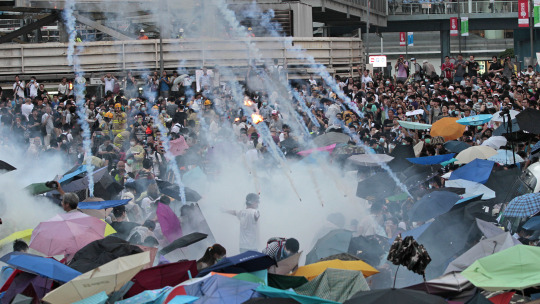
The language of the Earth Kingdom provincial governor echoes statements made by Chinese and Hong Kong pro-Beijing officials alike on the protests. The graffiti on the streets of Yu Dao is directly inspired by graffiti written by HK protesters. Today, many Hong Kong activists remain imprisoned or in exile.
64 notes
·
View notes
Text
What the hell is going on with Jujutsu Kaisen right now?
There is not enough time in the day for me to lay out my every complaint, so I'm just going to talk about the one that's really itching at me: What is the plot? Ever since the Culling Games started, it's been very vague what the ultimate end goal is. What are the heroes trying to do? Restore peace to Japan? Prevent a new Heian Era? I mean we've been fighting Sukuna for a while, but after he's dead it's not like things will magically go back to normal. For instance, is Megumi dead? If he isn't will he just come back if they beat up Sukuna enough?
The weirdest thing in the story is that Kenjaku won like...50 chapters ago and it feels like nothing really matters. Lets take a brief look at what all he's accomplished since Shibuya:
Mahito? Absorbed, took his Idol transfiguration 2 years back
Yuki? Dead, one of the strongest and smartest Sorcerers out there is no longer a roadblock.
Tengen? Dead, brain boy has complete control over all the barriers in Japan.
He went around the world and made various international trade agreements, that involved boots on the ground deployment to Japan by multiple militaries. Good luck punching away all those soldiers kids.
The Jujutsu Elders all got offscreen'd so the entire organization, including both schools, are now defunct. That means Cursed Spirits are just running wild and no one is really able to stop them.
And with Gojo dead, that's the last surefire person who can kill him. I doubt Yuta will fair any better than Takaba now. Only Yuji with the power of maternal love stands a chance now.
I guess they could stop his evil plan to summon a giant catepillar but after that? It's over. The damage is irreversible, Japan is fucked. They might as well sign an armistice with the dude and call it a day.
I have never seen anything like this in any other piece of media I've consumed. Normally the heroes are trying to prevent the bad guys from winning and have some kind of way to ensure they don't fail entirely even if they lose but the Sorcerers are so scattered and incompetent that they really had no chance. The villains have won, even if Kenny and Sukuna drop dead next chapter, the aftereffects are never going away.
At this point, I hope Takaba wins because Kenjaku has had such a nonstop winning streak that it's just annoying to read about now.
#jujutsu kaisen#gojo satoru#jjk spoilers#jjk#yuji itadori#kenjaku#yuta#jjk 236#villains#gege when i catch you gege#gege why#megumi fushiguro#geto suguru#jjk gojo
42 notes
·
View notes
Text
Even if Israel and Hamas agree to a cease-fire and it holds, normalcy will not return to Gaza anytime soon. For the Palestinians living there, the biggest long-term danger they face may not be Hamas or Israel—it could be a lack of government altogether. A postwar Gaza may join the ranks of Libya, Somalia, Yemen, and other states that suffer near-constant low-level strife, endemic crime, and humanitarian crisis after humanitarian crisis. Such states tend to produce waves of desperate refugees and can fuel further violence.
In Gaza’s modern history, different regimes have ruled the strip, rarely doing so for the benefit of its residents. After the British colonial presence ended in 1948 and a war commenced over Israel’s independence, Egyptian troops advanced into Gaza as part of their attack on Israel, and they kept control of the region in the 1949 armistice agreement between Egypt and Israel. In the years after, Egypt sought to both suppress and exploit Palestinian activism and political Islam. Palestinian cross-border raids were an instrument against Israel, but they could create an escalatory spiral. In the 1950s, repeated cross-border raids contributed to Israel’s decision to go to war against Egypt in 1956.
When Israel took power after conquering Gaza in the 1967 Arab-Israeli War, it also feared Palestinian activism, though it was more permissive than Egypt in allowing political Islam to develop. Under Israeli rule, Gaza’s economy improved, but the enclave remained poorly governed, with Israel less concerned about the well-being of Palestinians and more worried about their support for Palestinian nationalism.
The Palestinian National Authority, a forerunner of the Palestinian Authority (PA), took over the governance of Gaza and portions of the West Bank as part of the Oslo Accords, assuming control in 1994 under Yasser Arafat’s leadership. Although finally under Palestinian rule, the Palestinian leaders were primarily from the diaspora, not Gaza, and the PA focused more on the West Bank. Again, Gaza remained neglected.
Israel reoccupied Gaza during the Second Intifada, which began in 2000, and it withdrew in 2005. Although Israel’s campaign against Hamas weakened its terrorist capabilities, Hamas won a parliamentary election in 2006 and then seized power in Gaza in 2007. Finally, a Gaza-based organization was running Gaza. In some ways, life for Palestinians in the enclave improved—despite Hamas’s repressive ideology. It cracked down on crime, crushed local warlords, provided health and educational services, and was less corrupt than the PA.
At the same time, Israel and much of the international community rejected Hamas’s legitimacy. The group continued waging sporadic attacks on Israel, and Israeli governments placed severe limits on Gaza’s economic development and regularly engaged in destructive military campaigns in the enclave. Israel tried to balance this with limited economic concessions to Gaza, such as issuing more worker permits and offering greater fishing rights, and allowing millions of dollars in aid from Qatar to go to Gaza if Hamas stopped military attacks—a policy that Israel thought was working until the attacks on Oct. 7, 2023, dispelled this illusion.
Whatever limited gains Palestinians in Gaza may have made under Hamas rule have been shattered by Israel’s military response to the attacks committed by Hamas on Oct. 7. The Israeli campaign has killed more than 30,000 Palestinians and displaced 1.9 million people—85 percent of the enclave’s population. More than half of Gaza’s buildings had been damaged or fully destroyed by late January. The United Nations estimates that Gaza will need decades to recover at the cost of tens of billions of dollars—money that may never be provided. And U.N. officials warn that famine and disease will soon sweep the strip.
Some aid does get in, but much of it does not go to the neediest. Hamas has blended in with the population, and much of the day-to-day governance of Gaza, including policing, is gone as Israel continues to target what it considers to be Hamas’s infrastructure in Gaza. Criminal gangs now regularly rob unprotected aid convoys, selling what they steal to desperate Gazans.
Although a cease-fire would reduce some of the suffering, it does not resolve the most important political question: Who will rule Gaza? Israel understandably does not want the Hamas regime that murdered around 1,200 of its citizens to return to power and vows to destroy Hamas. Yet all the other contenders for power are weak, including the PA.
Any non-Hamas government has to worry about two sets of armed actors. Israel is likely to continue at least limited operations against the remnants of Hamas, assassinating its leaders and otherwise trying to prevent the group from reconsolidating. Hamas, for its part, might attack any interim government in order to ensure its political preeminence, and this is especially true if that government cooperates with Israel on security.
As for Gaza’s economy, even massive aid would not restore conditions that existed before Oct. 7—tenuous as they were. Although initial reports claiming that Palestinians from Gaza who worked in Israel had aided the Oct. 7 terrorists appear to be wrong, suspicion toward Palestinians among Israelis will remain high. Israel has accused the U.N. Relief and Works Agency (UNRWA)—which for decades has provided education, health care, food, and other services in Gaza—of being penetrated by Hamas. More broadly, the Oct. 7 attacks discredited Israel’s carrot-and-stick approach of offering limited economic concessions backed up by the threat of force to encourage moderation from Hamas. The future will see few carrots and far more sticks.
Foreign aid, while necessary for daily survival in Gaza, also comes with its own long-term risks for any government in the enclave. Aid from outsiders could have a corrupting effect, making any government less accountable to its own people; ordinary Palestinians in Gaza would have no way to stop officials from siphoning off aid and abusing their power.
This mix of chaos, privation, and conflict poses long-term risks not just for Palestinians, but also for Israel and the rest of the regional states. Many of Gaza’s people will try to leave if they can, with next-door neightbor Egypt being the most likely destination, should Cairo allow it. These conditions are also natural feeders for violent groups, which can easily recruit young men who need a paycheck and are bitter toward Israel and the international community for their role in Gaza’s desperate condition.
The Israel-Hamas war’s end would only mark the end of a chapter in the book of Palestinian suffering: The next chapter may be about the chaotic postwar period. Too often, U.S. and international policy in the region is focused on establishing a cease-fire or beginning negotiations, and not enough on lessening the suffering of ordinary people.
To reduce the risk of long-term state failure, the United States, European Union members, and others hoping for a solution to the conflict should focus on who will rule Gaza and how that entity’s rule will be enforced in the long term.
15 notes
·
View notes
Text
you see me now, a veteran of a thousand shipping wars
So I just saw the Variety interview with Rebecca Sugar about the 10th anniversary of the first episode of Steven Universe, and I have Big Damned Feelings about something in it. Things that I should know better than to say in public. Old battles that never ended in anything but the shakiest of armistices. Things we all coalesced into an unspoken agreement to never speak of again, but, being me, I can't help myself, I gotta vent. About the second time that Steven Universe fandom made ourselves look monstrous, one of the biggest reasons why other fandoms believe that Steven Universe fans are the worst fans in fandom.
Not only was I right about the Amedot/Lapidot shipwar, I was one of the ONLY people who was right about it. And that doesn't happen often, but I was in a unique place to see it. Because, you see, I am a member of the most hated group in fandom, especially here on Tumblr.
I fucking hate non-canon 'ships. Hate, hate, hate them.
Go ahead, call me a monster.
There are people in this world who, if you hand them a random pile of fashion dolls and/or action figures, are going to make them all kiss and then make them all fuck. It's like that's the only story they know: "now make them kiss!"
And time after time, I'm over here in the outcasts corner muttering to myself, "There is nothing in the canonical source material, nothing in these characters' culture, no authorial conscious or unconscious intent nor in the actors' performances, that suggests that these characters would ever in a million years find each other romantically or sexually attractive, let alone kiss, let alone fuck. There ARE other kinds of relationships, y'know."
In my old age I've long-since learned to let it just roll off of my back like water off a duck, to let them have their disgusting fun, to not let it get to me no matter how much it looks like defacing some artist's beloved work. Not my circus, not my monkeys; let people like what they like.
But.
When we were introduced to Lapis, the very first thing we were told about her was that she had just been released from 5,000 years of solitary confinement in that mirror (for a crime that Pink Diamond framed her for, not that she knew that) and spent some long part of that time in straight-up sensory deprivation with the mirror trapped in Pearl's pearl.
There was no way in hell she was ever going to process enough of that trauma to form any kind of romantic or sexual feelings in just a couple of seasons of a TV show. I found the whole idea that she was going to kiss anyone, fuse with anyone, emotionally repugnant.
Not long after we met Peridot, we found out that she felt deep shame and horror when the Crystal Gems took away her limb-enhancers. We even found out why: she was deep in the Gem Hegemony's propaganda that "off-color," form-non-compliant gems are disgusting abominations. And our Peridot only barely cleared the threshold. Only barely normal enough to have not been straight-up recycled at birth, but still ugly as fuck to a form-compliant peridot. She has known since however many tens of thousands of years ago she was made that nobody was ever going to fuse with her.
There was no way in hell she was ever going to process enough of that trauma to form any kind of romantic or sexual feelings in just a couple of seasons of a TV show. I found the whole idea that she was going to kiss anyone, fuse with anyone, emotionally repugnant.
So I appreciated the scene where she, in a moment of vulnerability, tried to fuse with Amethyst, the first gem she ever physically touched. And I appreciated even more the instilled shame and self-loathing that wouldn't let her go through with it.
So when Amedot shippers and Lapidot shippers went full on nuclear on every social media platform, like scorched-earth mutually assured destruction nuclear, determined to use coordinated action and maximal nastiness against anyone who advocated for a non-canon ship that contradicted their non-canon ship? I spent that whole time losing my damned mind, and the more people got driven off of social media over this (including, for fucks' sake, one of the show's own writing team, Lauren Zuke!) the more I went from trying to gently change the subject to just full-on fucking hating them both.
Rebecca Sugar has just straight-up said that both the Amedot shippers and the Lapidot shippers were wrong, and her explanation for why they were both wrong is pretty close to my interpretation of the writing and the performances (which, and I know this is part of why I have to vent about this, doesn't happen all that often). So if you fought in the Amedot/Lapidot War? I hope you're suitably ashamed of what you did, and I hope you finally learned better.
Okay, I got that out of my system. How you respond to that is on you. Replies and reblogs are open, but if you hate me for saying this, understand that I don't fucking care what you think.
18 notes
·
View notes
Text
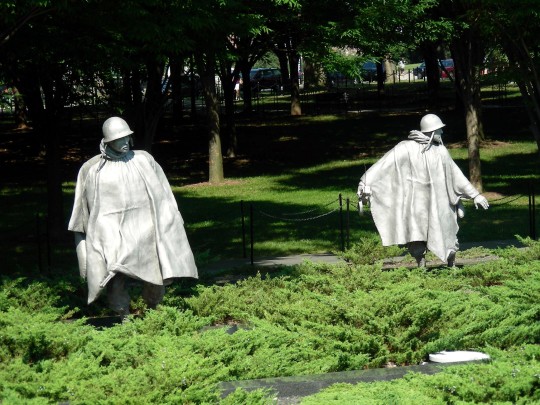


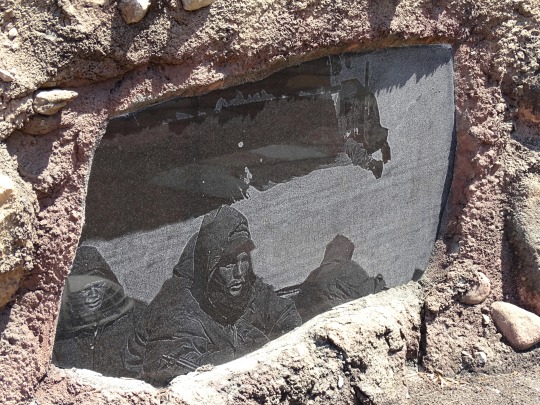

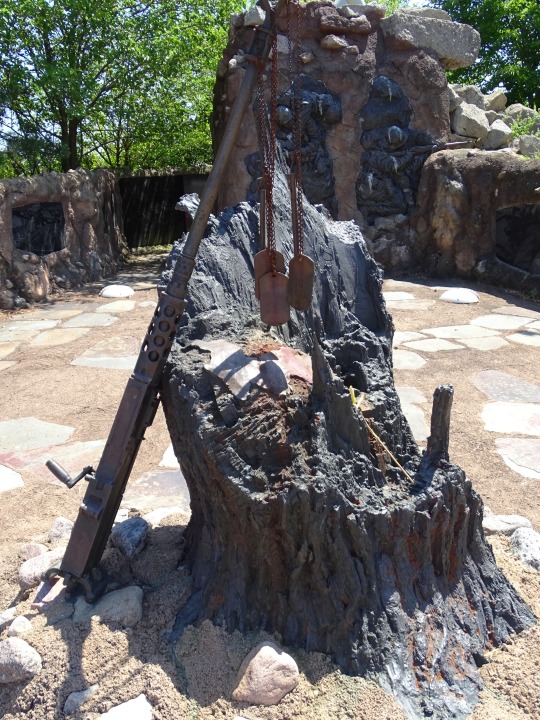

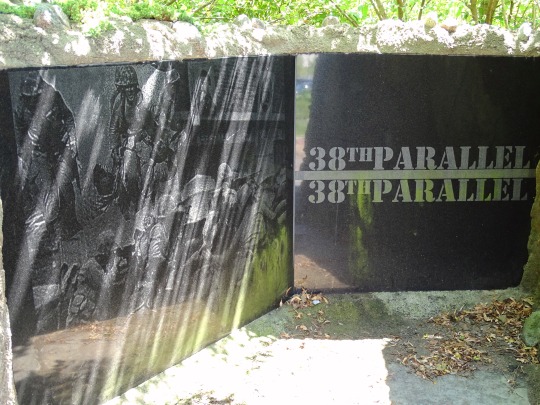

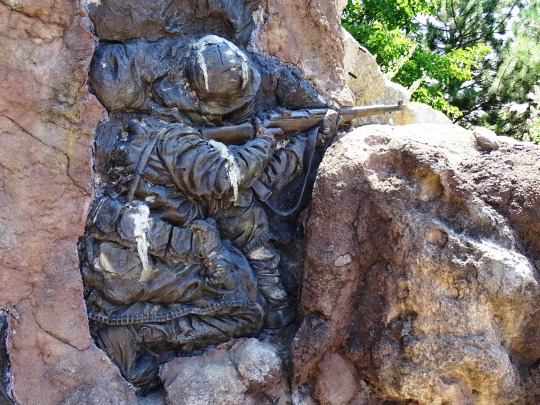
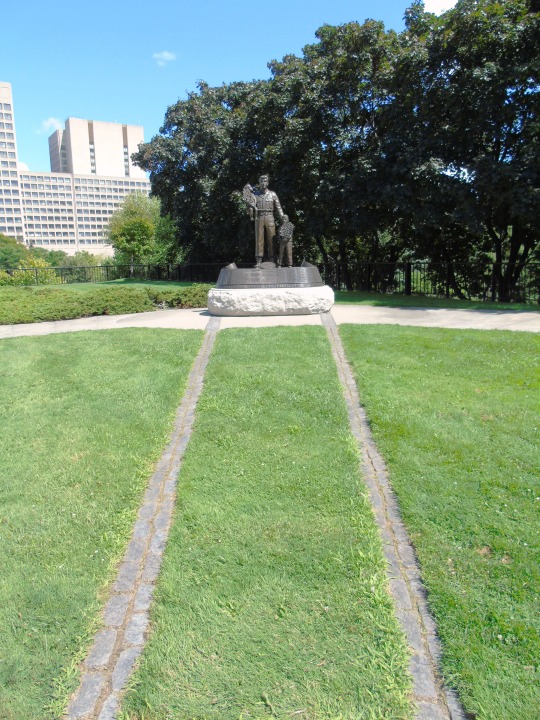
Cessation of hostilities was achieved in the Korean War when the United States, China, and North Korea sign an armistice agreement on July 27, 1953. Syngman Rhee, President of South Korea, refused to sign but pledged to observe the armistice.
#Korean War Monument by Vincent R. Courtenay#Ottawa#Korean War Veterans Memorial#travel#usa#original photography#vacation#tourist attraction#landmark#cityscape#architecture#Frank Gaylord#National War Memorial by Vernon March#Community Veterans Memorial#Munster#Indiana#Korean War Monument by Omri Amrany#Korean War#armistice#27 July 1953#70th anniversary#US history
27 notes
·
View notes
Text
I don’t think Hawkeye got more pessimistic or cynical wrt the war ending as the show/war went on.
Hawkeye says he’d make the same bet that the war was over in Ceasefire every time, and I think that holds true.
He tries to stop the war again in Peace on Us, he still goes on idealistic campaigns in the late seasons in episodes like Back Pay and Guerilla My Dreams and Blood and Guts etc, he tells his dad he’ll see him as soon as he can and he reassures BJ that they’ll all go home eventually in Period of Adjustmnt. And in GFA Hawkeye was eager for the war to end, not disbelieving. He leapt up upon hearing the announcement that both sides were preparing to sign an armistice agreement and demanded to go home since the war was virtually over. He also expected Sidney to send him home directly from the hospital and was surprised and betrayed when he didn’t.
I never get the sense that Hawkeye believes on any level including metaphorical that the war will never end or that he’ll be stuck there forever. He occasionally makes joking references to it lasting forever because the show pokes fun at itself for lasting longer than the Korean war, plus time flies when you’re having fun and when you’re stuck in a war zone time crawls so it’s an exaggeration of that, but he never loses that idealism, that knowledge that eventually this war will end and he’ll go home.
That said, I do think he got more cynical wrt losing his belief that he can do any good while he’s there. Like, that’s his thin ray of hope as depicted in Letters, and that’s what’s finally completely lost in GFA, imo. And alongside that I think you can see hints of it in the way his campaigns get less focused on achieving something after being burned so many times and more focused on just stating his mind, and even that falls by the wayside by the point of Say No More where it finally seems truly futile and he just silently walks away from the evil general du jour.
He never believes that he’s stuck in the war, and I don’t think that’s a relevant element to his story at all, but he stops believing there’s any silver lining to his time there.
#mash#marley on mash#hawkeye mash#i also think he just gets more exhausted and stops resisting the military as much but that's not really relevant to this character#trajectory#also i think this shift in hawkeye is correct and real - they don't do any good there and there are no real silver linings#it's an accurate realization for hawkeye#as far as i'm concerned#at least they don't do enough good to even come close to balancing out the bad yk i'm not saying saving children's lives is bad#i'm saying it doesn't stack up#(i found this in my drafts and ihni why i didn't post it? i can guess it's bc i saw a post about hawkeye believing he'll never leave and#didn't want to come across as argumentative#but i like this it deserves to see the light of day)#(hopefully i didn't refrain from posting it because i wrote an equivalent post and forgot lol)
30 notes
·
View notes
Text
Nonetheless, Palestinians have illegally built on more than 2,000 acres of Area C, spread across 250 different locations. This does not include 600 km of illegally-built roadways and more than 112,000 meters of retaining walls and terracing.
Investigative author Edwin Black, in a report entitled “EU Funding of Illegal Palestinian Settlement in Area C,” noted that Palestinian settlements “are often strategically scattered to effectively carve up Area C, sometimes surround Jewish villages, and sometimes push onto Israeli nature or military reserves.”
Black also described some of the various structures in these new, illegal settlements: Makeshift structures adorned with the EU logo on them, multi-floor office centers and palatial homes. “A broad gamut of construction styles can be seen,” he wrote.
All of this is being done in accordance with a joint Palestinian-EU plan to take control of land—without negotiations—for the creation of a de-facto Palestinian state based on the 1948 armistice lines that resulted from Israel’s war of independence.
An article in the Palestine-Israel Journal of Politics, Economics and Culture described the implementation of this plan: “Since August 2009, [Palestinian Prime Minister Salam] Fayyad, with the help of the Barack Obama administration and the European Union, has been quietly building national institutions and physical infrastructure . . . in the West Bank.”
Last year, it was revealed that the EU, too, has a secret plan to fund illegal Palestinian construction, known as the “European Joint Development Programme for Area C.” It has an annual budget of 300 million Euros.
One illegal Palestinian structure financed by the EU was a school located inside an Israeli nature reserve. Last May, Israel demolished it. In a statement, the IDF said the school was built illegally and “was found to be dangerous to the safety of anyone studying or otherwise visiting there,” therefore an Israeli court, “ordered it demolished.”
Instead of praising Israel for ensuring the safety of Palestinian children, the EU condemned the Jewish state. A spokesperson for the bloc said, “(Such) demolitions are illegal under international law and children’s rights to education must be respected.” Apparently, Palestinian children have the right to education, but not to safety.
As Edwin Black wrote in his report, “The European governments and the PA have thus joined forces to complete the final shredding of the already weakened Oslo agreements.”
#palestinians#illegal building#area c#european union#european joint development programme for area c
21 notes
·
View notes